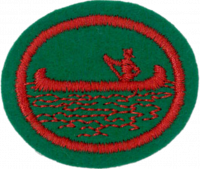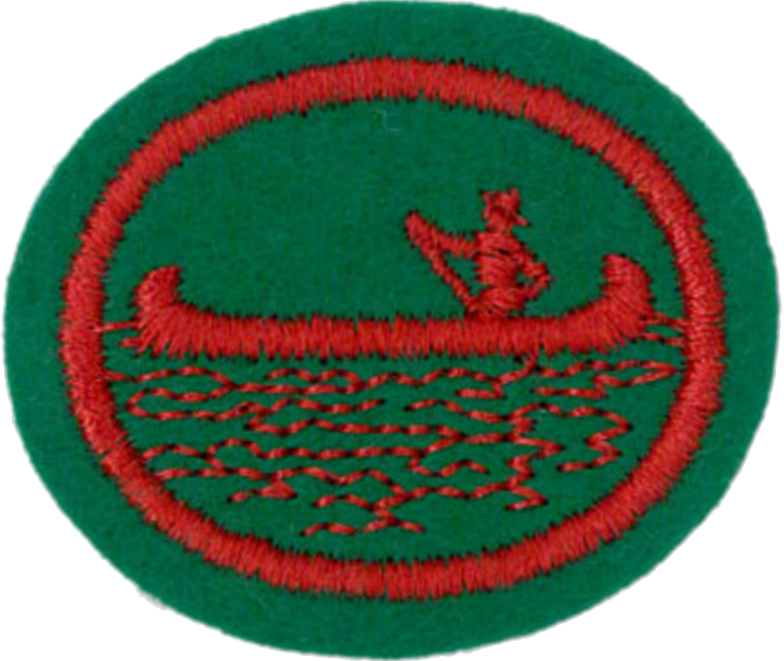Difference between revisions of "AY Honors/Canoeing/Answer Key/es"
From Pathfinder Wiki
(Created page with "</noinclude>") |
|||
| (13 intermediate revisions by 2 users not shown) | |||
| Line 1: | Line 1: | ||
| − | + | {{HonorSubpage}} | |
| − | + | <!--{{Honor_Master|honor=Canoeing|master=Aquatic}}--> | |
| − | {{ | ||
| − | |||
| − | |||
| − | |||
| − | |||
| − | |||
| − | |||
| − | |||
| − | }} | ||
| − | {{Honor_Master | ||
| − | |||
| − | |||
<section begin="Body" /> | <section begin="Body" /> | ||
{{ansreq|page={{#titleparts:{{PAGENAME}}|2|1}}|num=1}} | {{ansreq|page={{#titleparts:{{PAGENAME}}|2|1}}|num=1}} | ||
<noinclude></noinclude> | <noinclude></noinclude> | ||
<!-- 1. Tener la especialidad de Natación II. --> | <!-- 1. Tener la especialidad de Natación II. --> | ||
| − | {{honor_prerequisite | + | {{honor_prerequisite|category=Recreation|displayname=Natación II|honor=Swimming - Intermediate}} |
<noinclude></noinclude> | <noinclude></noinclude> | ||
| Line 35: | Line 23: | ||
{{ansreq|page={{#titleparts:{{PAGENAME}}|2|1}}|num=2aii|dispreq=ii}} <!--T:3--> | {{ansreq|page={{#titleparts:{{PAGENAME}}|2|1}}|num=2aii|dispreq=ii}} <!--T:3--> | ||
<noinclude></noinclude> | <noinclude></noinclude> | ||
| − | |||
<noinclude></noinclude> | <noinclude></noinclude> | ||
{{CloseReq}} <!-- 2aii --> | {{CloseReq}} <!-- 2aii --> | ||
| Line 66: | Line 53: | ||
{{CloseReq}} <!-- 3b --> | {{CloseReq}} <!-- 3b --> | ||
{{ansreq|page={{#titleparts:{{PAGENAME}}|2|1}}|num=3c}} | {{ansreq|page={{#titleparts:{{PAGENAME}}|2|1}}|num=3c}} | ||
| − | <noinclude></noinclude> | + | <noinclude></noinclude> |
{{clear}} | {{clear}} | ||
| Line 100: | Line 87: | ||
<!-- 4. Solo y con un compañero en la proa y popa, remar una canoa en un curso recto por 100 yardas (90 metros). Girar a la derecha y girar a la izquierda. La paleta debe mantenerse siempre en el mismo lado de la canoa. Demostrar dos posiciones de las rodillas para remar. --> | <!-- 4. Solo y con un compañero en la proa y popa, remar una canoa en un curso recto por 100 yardas (90 metros). Girar a la derecha y girar a la izquierda. La paleta debe mantenerse siempre en el mismo lado de la canoa. Demostrar dos posiciones de las rodillas para remar. --> | ||
| − | {{clear}} | + | {{clear}} |
| + | |||
| + | {{clear}} | ||
{{clear}} | {{clear}} | ||
| Line 130: | Line 119: | ||
{{ansreq|page={{#titleparts:{{PAGENAME}}|2|1}}|num=6}} | {{ansreq|page={{#titleparts:{{PAGENAME}}|2|1}}|num=6}} | ||
<noinclude></noinclude> | <noinclude></noinclude> | ||
| − | <!-- 6. Saltar afuera de la canoa en aguas profundas y volver a entrar de nuevo en la forma apropiada trayendo la menor cantidad de agua posible (el candidato debe estar acompañado por un salvavidas en un bote salvavidas equipado). --> | + | <!-- 6. Saltar afuera de la canoa en aguas profundas y volver a entrar de nuevo en la forma apropiada trayendo la menor cantidad de agua posible (el candidato debe estar acompañado por un salvavidas en un bote salvavidas equipado). --> |
{{clear}} | {{clear}} | ||
| Line 159: | Line 148: | ||
{{ansreq|page={{#titleparts:{{PAGENAME}}|2|1}}|num=7e}} <!--T:19--> | {{ansreq|page={{#titleparts:{{PAGENAME}}|2|1}}|num=7e}} <!--T:19--> | ||
<noinclude></noinclude> | <noinclude></noinclude> | ||
| − | |||
<noinclude></noinclude> | <noinclude></noinclude> | ||
| Line 166: | Line 154: | ||
{{ansreq|page={{#titleparts:{{PAGENAME}}|2|1}}|num=8}} | {{ansreq|page={{#titleparts:{{PAGENAME}}|2|1}}|num=8}} | ||
<noinclude></noinclude> | <noinclude></noinclude> | ||
| − | <!-- 8. | + | <!-- 8. Demostrar de manera satisfactoria al examinador sobre un conocimiento profundo de las normas de seguridad que hará al candidato un piragüista seguro y competente para sacar a los demás en una canoa. Prometer observar estar normas en todo momento. --> |
| − | + | ||
| − | + | {{clear}} | |
| − | + | ||
| − | + | {{clear}} | |
| − | + | ||
| − | + | {{clear}} | |
| − | + | ||
| − | + | {{clear}} | |
| − | + | ||
| − | + | {{clear}} | |
| − | + | ||
| − | + | {{clear}} | |
| − | + | ||
| − | + | ||
| − | + | ||
| + | |||
<noinclude></noinclude> | <noinclude></noinclude> | ||
| Line 187: | Line 176: | ||
{{ansreq|page={{#titleparts:{{PAGENAME}}|2|1}}|num=9}} | {{ansreq|page={{#titleparts:{{PAGENAME}}|2|1}}|num=9}} | ||
<noinclude></noinclude> | <noinclude></noinclude> | ||
| − | <!-- 9. | + | <!-- 9. Explicar cómo hacer los siguientes trabajos de reparación de emergencia: --> |
| − | |||
<noinclude></noinclude> | <noinclude></noinclude> | ||
{{ansreq|page={{#titleparts:{{PAGENAME}}|2|1}}|num=9a}} | {{ansreq|page={{#titleparts:{{PAGENAME}}|2|1}}|num=9a}} | ||
<noinclude></noinclude> | <noinclude></noinclude> | ||
| − | |||
<noinclude></noinclude> | <noinclude></noinclude> | ||
| Line 198: | Line 185: | ||
{{ansreq|page={{#titleparts:{{PAGENAME}}|2|1}}|num=9b}} <!--T:22--> | {{ansreq|page={{#titleparts:{{PAGENAME}}|2|1}}|num=9b}} <!--T:22--> | ||
<noinclude></noinclude> | <noinclude></noinclude> | ||
| − | |||
| − | + | {{clear}} | |
<noinclude></noinclude> | <noinclude></noinclude> | ||
| Line 206: | Line 192: | ||
{{CloseReq}} <!-- 9 --> | {{CloseReq}} <!-- 9 --> | ||
<noinclude></noinclude> | <noinclude></noinclude> | ||
| − | == | + | |
| − | + | ==Referencias== | |
<noinclude></noinclude> | <noinclude></noinclude> | ||
| − | + | {{CloseHonorPage}} | |
Latest revision as of 19:57, 25 July 2022
1
Tener la especialidad de Natación II.
Para consejos e instrucciones, véase Natación II.
2
Demostrar, primero solo y luego con un compañero, el buen método de:
2a
Introducir y lanzar (botadura) una canoa
i
Desde una playa
ii
Desde el muelle o embarcadero
2b
Atracar y dejar una canoa
i
En una playa
ii
Desde el muelle o embarcadero
3
Acompañado por el consejero que lo examina, demostrar correctamente las siguientes remadas:
3a
Proa (bow)
3b
Arrastre diagonal
3c
Arrastrado medio a la derecha
3d
Remadas en forma de J
3e
Arrastrado medio a la izquierda
3f
Empuje lateral
3g
Arrastrado completo
3h
Combinación de arrastrado y remadas en forma de J
4
Solo y con un compañero en la proa y popa, remar una canoa en un curso recto por 100 yardas (90 metros). Girar a la derecha y girar a la izquierda. La paleta debe mantenerse siempre en el mismo lado de la canoa. Demostrar dos posiciones de las rodillas para remar.
5
Demostrar con una canoa el rescate de un compañero que su canoa zozobró al:
5a
Vaciar la canoa inundada de agua acercándola y volteándola y bajándola a la borda de la canoa de salvamento.
5b
Echar al agua la canoa rescatada de nuevo.
5c
Mantener firme la canoa mientras su compañero sube a bordo.
6
Saltar afuera de la canoa en aguas profundas y volver a entrar de nuevo en la forma apropiada trayendo la menor cantidad de agua posible (el candidato debe estar acompañado por un salvavidas en un bote salvavidas equipado).
7
Con la ropa puesta:
7a
Volcar (zozobrar) una canoa en aguas profundas.
7b
Enderezar la canoa y guardar los remos y colchonetas para las rodillas.
7c
Colocarse en la canoa llena de agua y remar con las manos o con el remo por 25 yardas (24 metros).
7d
Quitarse la ropa, guardarla junto con el remo, lanzarse por la borda, sostener la canoa por la proa con una mano, nadar y remolcar la canoa inundada hasta la orilla.
7e
Vaciar la canoa correctamente y llevarla a tierra para atracarlo (el candidato debe estar acompañado por un salvavidas en un bote salvavidas equipado).
8
Demostrar de manera satisfactoria al examinador sobre un conocimiento profundo de las normas de seguridad que hará al candidato un piragüista seguro y competente para sacar a los demás en una canoa. Prometer observar estar normas en todo momento.
9
Explicar cómo hacer los siguientes trabajos de reparación de emergencia:
9a
Reparar un agujero de una pulgada (tres centímetros) en una canoa de fibra de vidrio, lona y aluminio.
9b
La reparación del mango del remo roto.


